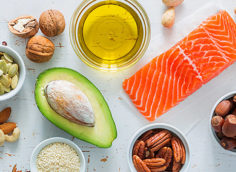Beware of Supernormal Stimuli Foods
High reward foods are very calorie dense and often very tasty. They're generally high in added fats and/or sugar, and the reward properties of these foods may also be enhanced through the use of salt or monosodium glutamate (MSG).
High reward foods are "supernormal stimuli," sometimes called a supernormal releaser. The term, which is from ethology (the study of animal behavior), refers to a behavioral phenomenon whereby animals respond more intensely to stimuli that are exaggerated versions of the normal stimuli with which they evolved (1,2,3).
Here's a fun example. The Australian jewel beetle has a body that's big, long, and brown. The males are hard-wired to like certain features of the female, namely largeness, brownness, and shininess. So what's really large, brown, and shiny? A beer bottle. That's right, the males attempt to copulate with a type of discarded brown beer bottles called "stubbies."

Just as animals respond more strongly, and often preferentially, to the exaggerated (supernormal) stimuli, humans can respond similarly to exaggerated versions of foods.
This isn't to suggest you might mate with a pork chop. It just means these high-reward foods can act as supernormal stimuli and can lead to maladaptive eating behaviors that hinder fat loss and promote fat gain. Here are two of them:
- Consistent and continued consumption of high-reward foods (the supernormal stimulus) can render whole foods (a normal stimulus) less appealing or unappealing.
- The influence of supernormal stimuli has changed what people think is a "large" portion size for a single meal. Research in 2006 replicated a study that was done in 1984 in which participants were asked to serve themselves an amount they considered to be a typical portion of each item on a buffet table (4).
The 2006 study found that peoples' perceptions of what they consider to be normal portion sizes have changed in the past 20 years. As you might guess, they've grown larger. Much larger. The researchers called this "portion distortion" (5). Exaggerated portion sizes can serve as a supernormal stimulus that distorts your perception of appropriate amounts to eat at a single meal.
How to Use This Info
Keeping the above two points in mind, not only can high-reward foods cause you to be less satisfied by whole foods (and therefore make adherence to a diet that emphasizes whole foods more difficult), but also more likely to eat larger portion-size meals.
Given this phenomenon, it makes sense to minimize exposure to high-reward foods, or at least be continually aware of portion sizes.
References
- Alcock, J. Animal Behavior: An Evolutionary Approach. Sinaur Press: Oxford, MA; 1975.
- Staddon, J. A note on the evolutionary significance of "supernormal" stimuli. American Naturalist 109(969): 541-545, 1975.
- Tinbergen, N. Social releasers and the experimental method required for their study. Wilson Bulletin 60: 6-51, 1948.
- Guthrie, H. Selection and quantification of typical food portions by young adults. Journal of the American Dietetic Association 84(12): 1440-1444, 1984.
- Schwartz, J, and Byrd-Bredbenner, C. Portion distortion: Typical portion sizes selected by young adults. Journal of the American Dietetic Association 106(9): 1412-1418, 2006.





